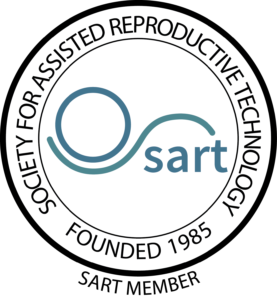Donor sperm insemination or therapeutic donor insemination (TDI)
The donation of semen for therapeutic insemination has been practiced in this country for many years resulting in the birth of thousands of infants each year. Its use has steadily increased during the last few years due, in part, to its increasing acceptance as a recognized medical procedure and by a decrease in the availability of infants for adoption. While not a medical indication for donor insemination, certainly single females or women in same-sex relationships may use TDI to become mothers as well.
Medical Indications for Donor Sperm Insemination
- The male is irreversibly sterile from any cause.
- The male has had a vasectomy and does not want a reversal.
- The male has a low or marginal sperm count, antisperm antibodies, or some other condition where the male factor is thought to be the predominant cause of the infertility and cannot be overcome by other means.
- The male has or is a carrier of a known hereditary disease.
- The male has problem with ejaculation that cannot be overcome by current technology.
- The female is Rh-negative and severely sensitized to Rh-positive blood and male is Rh-positive.
- Failed fertilization in Assisted Reproductive Technology (ART) procedures in couples with a male factor or unexplained infertility.
Making a Decision
The decision to utilize donor sperm inseminations (IUI) is not an easy one. There are many factors that the couple will need to consider before this decision can be made. Possibly, the most difficult factor for the couple is the emotional acceptance of having a child with a different biological father than the husband. Cultural background and religious beliefs will also influence this decision. The couple can be referred for further professional counseling, if necessary, during this decision-making process.
Implications Counseling
Patients using a third party as part of their fertility treatment must undergo professional implications counseling prior to proceeding. There are many psychological, moral and ethical issues surrounding this kind of treatment, with far-reaching implications for the family and the hoped-for child. Issues of disclosure, confidentiality and parentage are also discussed. It is essential that both partners feel comfortable with the decision and that all fears and questions be openly discussed.
The Next Step
Once the couple has decided to utilize donor insemination, an appointment is made for the couple to meet with the physician or nurse to sign the consent forms, select the donor(s), and give a blood samples for laboratory tests. The female patient will also have a physical examination.
Consent Form for Donor Sperm Insemination
The couple considering the use of donor insemination must be fully informed about all aspects of the process and their consequences. They then must sign an informed consent statement including the following:
- The husband is treated in law as if he were the natural father of the child and all children born shall be legitimate children and heirs to the couple’s estate.
- The couple will never seek to identify the donor, nor will the donor ever be able to identify the couple.
- There is no guarantee that insemination will result in a pregnancy.
- A certain percentage of all children are born with physical or mental defects, and the occurrence of such defects is beyond the control of physicians.
- There is a very small risk of infection.
- Any pregnancy carries with it the risk of obstetrical complications or miscarriage.
- Semen from the same donor may not be available for all inseminations.
- Frozen sperm that has been quarantined for a minimum of 6 months will be used.
Evaluation of the Couple for Donor Sperm Insemination
Male or Partner Evaluation
The male or partner will have a clinical evaluation with review of medical records. Blood will be drawn to determine blood type and Rh factor and to determine if antibodies to HIV-I and II (AIDS virus) are present.
Female Evaluation
Routine medical and reproductive history and complete general physical examination will be performed. Blood is drawn for standard preconception screening which includes blood type and Rh factor and rubella titer. Her serum is also tested for cytomegalovirus (CMV), syphilis, hepatitis B & C, and HIV-1&2 antibodies. A test called a CBC is done to help assess general health. A cervical culture is taken to determine the presence of Gonorrhea and Chlamydia infections.
Donor Selection for Donor Sperm Insemination
The Donor Selection Worksheet allows close matching of the donor(s) with characteristics of the couple. These include: race, ethnic origin, blood type, height, weight, body build, skin tone, eye color, hair color, and hair texture. Three donors are chosen by the couple from the Cryobanks’ donor selection lists and prioritized 1 through 3 thus allowing alternative donor choices if a donor becomes unavailable. Please see the instructions for ordering donor sperm for more information.
Visit our page on Cryobank Semen Donor Screening Procedures for more information about the Sperm Donor Screening Process
How the Sperm Donor Insemination is Done
The timing of the insemination is usually determined by means of an LH-surge kit, but may also include a blood test for estradiol level, and follicular ultrasound. This insures accuracy and allows use of only one insemination, which is more convenient and cost-effective for the patient. The frozen donor specimen is washed with a special medium, unless a “pre-washed specimen” is used, and intrauterine insemination (IUI) is performed. The patient lies on her back on the exam table in the position for a pelvic exam and a small catheter containing the sperm is passed through the cervix into the uterus where the sperm are expelled. The procedure is usually quick and painless, though rarely, some of our patients do report some discomfort.
Following the insemination, the woman remains on the exam table for 15 minutes. She may then resume normal activities. Unless the patient begins her period, she will take a urine pregnancy test about 14 days after insemination (or when her expected period is two days late). Ovulation induction patients will receive instructions about when to take a urine pregnancy test. Blood will be drawn for a quantitative serum pregnancy test (quantitative HCG) if the urine test is positive.
Results: The monthly conception rate, or chance of conceiving in one cycle, is 10% for unstimulated IUI cycles, and 20% for FSH-stimulated cycles using IUI and a donor specimen containing at least 10 million cryopreserved thawed motile sperm. This compares well with the average conception rate of the “normal” population who are attempting pregnancy, which is between 20 and 25 percent. The cumulative conception rate is the number of patients conceiving after a number of attempted cycles. Assuming an average of 15% monthly conception rate for donor insemination, the cumulative conception rate would be 63 percent (or 63 out of 100 patients) conceiving after 6 months (6 attempts).
Resources:
Resolve: The National Infertility Association.







